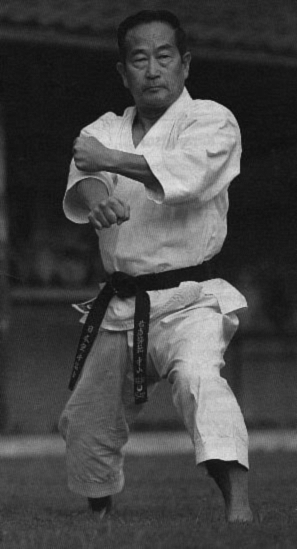|

The development of contemporary Shoto-kan began when Nakayma became the chief instructor for the JKA. Nakayama, originally a practitioner of Kendo (Japanese sword fighting martial art), became exposed to Karate as a freshman at Takushyoku University when he mistakenly arrived at a Karate training session, thinking that the Kendo club should be practicing. He decided then to join the Karate club rather than the Kendo club. Under the direction of Nakayama, the Okinawan Karate was influenced by concepts from Japanese Kendo, and started using strategy and tactics which did not rely heavily upon blocking. Instead, contemporary Shoto-kan became distinguished by its use of DEAI (tu utilize an opponent's opening at the moment of his commitment to attack) and MIKIRI (an attack to an opening at the end of an opponent's technique, after stepping outside his reach).
Contemporary Shotokan stylists are fond of quick forward and backward shifting in fighting, with combination techniques and strong control of the distance to the opponent. This group is the largest in the most popular four styles of Karate internationally. However, within the past decade, Tokyo began to lose touch with the world karate movement. First France, then Italy, Germany and others left the unification of JKA International. JKA currently is losing control of branches all over the world.
From Kitoh Karate by S. Sugiyama, copyright 1994
|